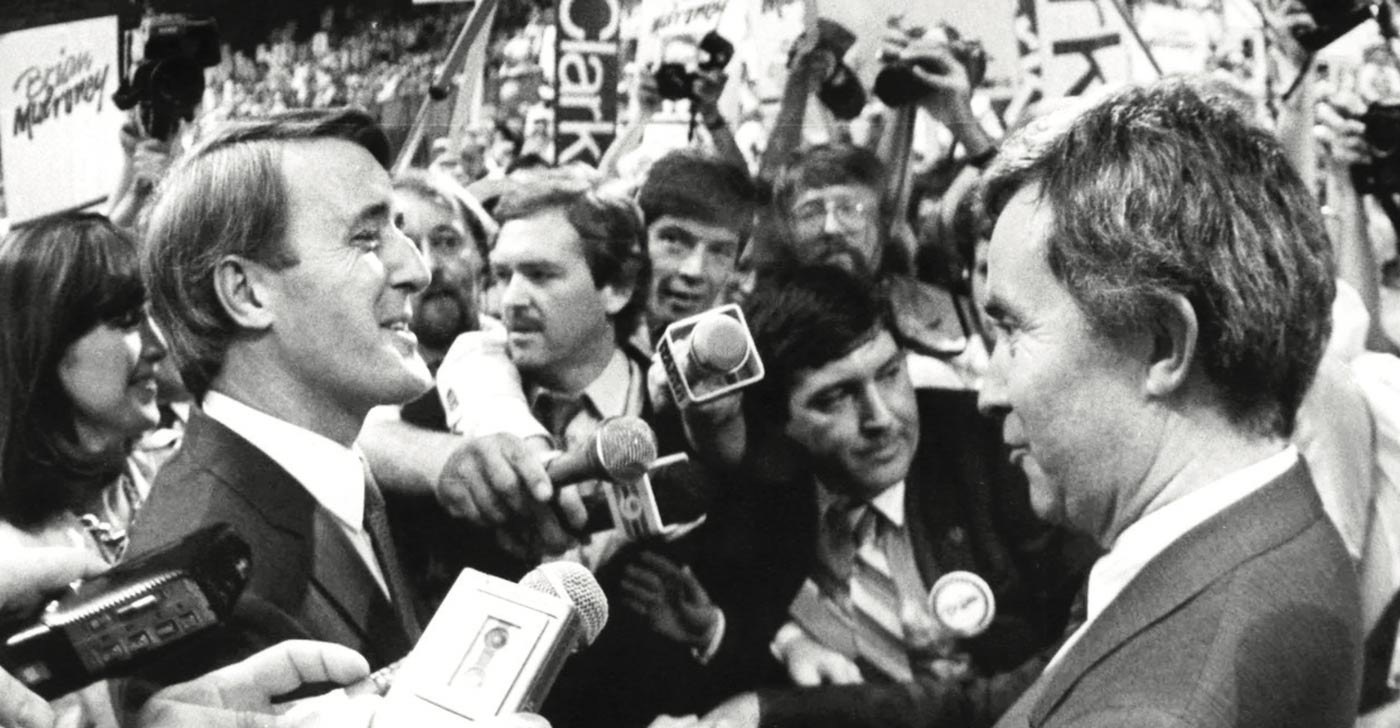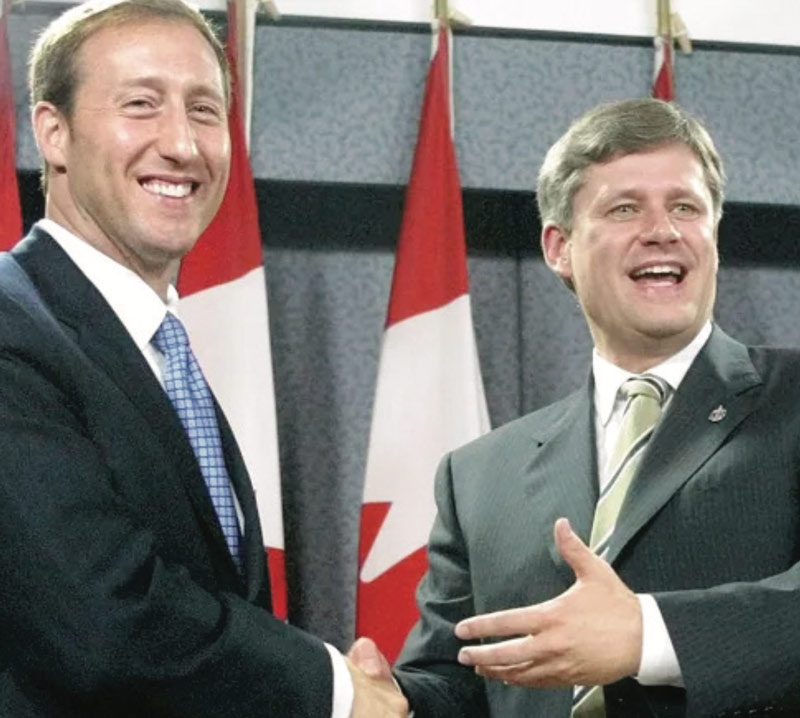The Conservative Party’s Road Ahead

While the Conservative leadership race has underscored the party’s divisions – between Trumpian tactical politics and conventional executive leadership, between progressive and social conservatives, among other rifts – veteran Tory strategist Geoff Norquay charts a path for unifying the party and moving forward toward the next election, no matter who wins in September.
Geoff Norquay
The Conservative Party leadership contest reached a new milestone on June 3 with the end of the period for selling new memberships. Even allowing for some spin inflation among key candidates, the news for the party is good. It now has more members than any Canadian political party in history – somewhere in excess of 600,000.
It’s also clear that something very positive is going on for the Conservatives beyond the party being $7 million richer from membership sales. With the Liberals’ popular vote having declined in three straight elections, from a high of 39.6 percent in 2011 to a low of 32.6 per cent in 2021, the Conservatives’ next leader has a better-than- even chance of becoming prime minister.
With the hard-edged partisan Pierre Poilievre and the experienced and managerial Jean Charest going head-to-head, some are seeing the contest as a “fight for the soul of the party,” but that characterization is overwrought.
While it has some rough edges, Poilievre’s populism is neither as scary nor as foreign as some argue. His promise to make Canada “the freest country in the world” taps directly into John Diefenbaker’s personal dedication to freedom: “I am a Canadian, free to speak without fear, free to worship in my own way, free to stand for what I think right, free to oppose what I believe wrong, or free to choose those who shall govern my country.”
Diefenbaker stood behind his words: his 1960 Bill of Rights broke new ground in defining the freedoms of Canadians and served as the starting point for the adoption of the Charter of Rights and Freedoms in 1982.
While he has lived much of his life in Ottawa, Poilievre grew up in Calgary, and his current campaign nurtures prairie populist seeds sowed decades ago by classic Western populists such as Diefenbaker and Alberta and Saskatchewan premiers William Aberhart and Tommy Douglas. Diefenbaker famously took on then-governor of the Bank of Canada James Coyne, over his interest rate policies, and ultimately forced his resignation. Sound familiar? Diefenbaker also regularly railed against other “gatekeepers” too, especially the corporate leaders and monied titans of Bay Street, who often opposed his economic policies.
In their times, Aberhart and Douglas regularly championed the interests of the many dispossessed economic victims of “hard times” in the 1930s and 40s and took on the institutions and individuals they viewed as responsible. Leading the first Social Credit government in the world, Aberhart’s various attempts to gain control of the province’s banks to stop farm foreclosures were overturned by the Supreme Court of Canada and the federal government disallowed his legislation. A Social Credit pamphlet of the era described “bankers’ toadies” as “snakes, slugs, snails and other creepy-crawly, treacherous and poisonous things” that should be “exterminated.” Talk about railing against gatekeepers!
In Saskatchewan, like Diefenbaker, Tommy Douglas as premier had a strong interest in safeguarding individual freedoms: his CCF government pioneered the Saskatchewan Bill of Rights in 1947, legislation that contained the first protections in Canada of fundamental freedoms and equality rights against abuse by both government actors and powerful private institutions. His legislation preceded the United Nations Universal Declaration of Human Rights by 18 months. Of course, Douglas’s major legacy was Medicare, achieved against the combined opposition of the ultimate set of gatekeepers – the North American medical establishment who fought his legislation to their ultimate defeat.

If Poilievre represents the populist side of the Canadian conservative heritage, Jean Charest represents the established institutional heritage of the party, with deep understanding of federal-provincial dynamics and experience in governing at both levels of government. Charest is a classic socially progressive Conservative who also carries the scars gained from making the tough decisions required in successfully running governments and balancing budgets. As an early, strong proponent of Canada-European Union free trade and as the former premier of Quebec – the second largest provincial GDP in the country – he has sophisticated knowledge of how Canada’s economy works.
Party leaderships are often bruising affairs and the heat generated by this one has, on occasion, approached that of a dumpster fire. But if we look beyond the sturm und drang among the contestants, it’s also clear that when the dust settles, the winner is going to have to put the party back together. So, it’s useful to look back at how successful new leaders of the past accomplished this essential task.
In 1971, education minister Bill Davis narrowly defeated cabinet colleague Allan Lawrence for the leadership of the Ontario PCs by 44 votes on the final ballot. Chastened by his narrow win, Davis immediately brought Lawrence’s entire campaign team onboard as his principal political advisors. They quickly became known as the Big Blue Machine, and their organizational genius helped keep Davis in office and dominated Ontario politics for the next 15 years.
Brian Mulroney took the leadership from Joe Clark in 1983, but during the contest, Clark, the incumbent, had many more caucus supporters than Mulroney, the insurgent. The moment he won, Mulroney quieted the voices of his supporters who were intent on revenge and quickly made places for the MPs who had supported Clark on his new team as well as most of Clark’s senior staffers. He also brought Bill Davis’s Big Blue Machine onside, and a year later, they helped Mulroney and the reunited party win the biggest majority in Canadian history.
After Stephen Harper and Peter MacKay in 2004 united the Canadian Alliance and the Progressive Conservatives in the new Conservative Party and Harper became leader, he faced the challenge of creating a new front bench in the House of Commons. He asked one of his advisers to draw up three lists for potential staffing: First, the people who supported him and were really good. Second, the people who ran opponent Stockwell Day’s campaign, were good, and were loyal to Day to the end. Third, the folks who supported Harper later on, once they caught the direction in which the wind was likely blowing. “I’m interested in the first two groups,” he said.
To make room for the former PCs, this meant that several former Alliance MPs would lose their critic positions and be relegated to the backbench. Harper said that these were among the most difficult decisions he had to make as leader, but they were essential for the unity of the new party.
A new leader and his team must also conduct an early review of the party’s policies and operational approaches. Are they still relevant, or are adjustments warranted? Do new and emerging challenges require a rethink of the party’s traditional views? How do current policies sit with core supporters and what emerging issues are on the minds of population groups the party is attempting to attract?
Whichever way this leadership election goes, the victor will also have to actively reconcile the different traditions within the party. This goes beyond camps clustered around individual leadership contenders; this is a matter of balancing the different sub-groups, keeping them all validated, and keeping them all inside the tent.
Reflecting our political culture and the essential regional structure of the country, Canadian political parties are famously unideological. Moreover, they are demonstrably more successful when they build bridges in support between “true believers” and available voters, urban/suburban and rural, new and established Canadians and Quebec and the rest of Canada.
The Conservative Party and its predecessors have long been a coalition of “Blue” (business) conservatives, Red Tories (or conservatives who see the agency of the state as a critical component of nation-building), social conservatives, proto-libertarians, and institutional/democratic reformers. It also has markedly different flavours across Canada’s regions: Atlantic Tories tend to be culturally conservative but open to government intervention and public investment; Quebec conservatives tend to be strong provincialists or “soft-nationalists”; whereas the prairie tradition is more populist in the spirit of Social Credit and the NDP.
The real artistry is in weaving these camps together and holding them fast. That’s the real challenge. And it requires hard and purposeful work. This also means that the leadership convention on September 10th isn’t the end of the contest. It’s only the end of phase one.
Whether the ultimate winner is Poilievre or Charest, the importance of uniting the populist and managerial wings of the party recently received a pointed reminder from former Liberal finance minister Bill Morneau. Speaking to the C. D. Howe Institute of his time in cabinet, Morneau said,
“So much time and energy was spent on finding ways to redistribute Canada’s wealth that there was little attention given to the importance of increasing our collective prosperity…I struggled to get our government to focus on the need for sustained economic growth, because it was constantly crowded out by other things that seemed more politically urgent, even if they weren’t truly as important.”
That’s the voice of a species placed on the endangered list by Justin Trudeau. The “business Liberals” are a formerly powerful faction within the party that has seen its influence and visibility radically diminished since 2015. Liberal cabinet titans of the past – C. D. Howe, Mitchell Sharp, Charles “Bud” Drury, John Turner, John Manley, Paul Martin – all served in key economic portfolios in their day, providing successive Liberal governments with a steady hand on spending and economic credibility on budgets.
The current Trudeau version of liberalism, with its constant virtue signaling and tilting at equality windmills inspired by presentism, has worn very thin with business Liberals. They have left the Liberal Party and are without a home, and this has opened a huge window of opportunity for the Conservatives. Seeing whether they have the sense to open that window under a new leader will make for a fascinating 2023 for the Canadian political system.
Contributing Writer Geoff Norquay was lead adviser on social policy in the Prime Minister’s Office under Brian Mulroney, and director of communications under Stephen Harper in the Opposition Leader’s Office from 2004-06. He is a Principal of Earnscliffe Strategies in Ottawa.
